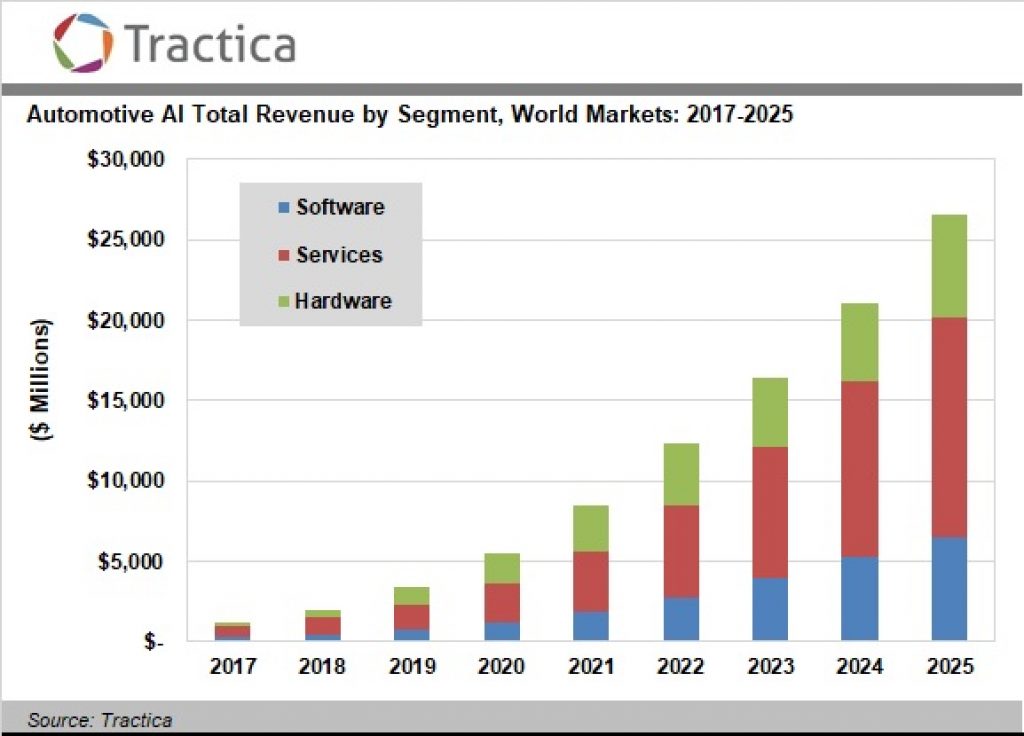This market research report was originally published at Tractica's website. It is reprinted here with the permission of Tractica.
Investment in AI for Autonomous Vehicles Will Rise Rapidly Over the Next Few Years, in Addition to Applications Focused on Personalization, Predictive Maintenance, Localization and Mapping, and Other Automotive Use Cases
The automotive industry is among the sectors at the forefront of using artificial intelligence (AI) to mimic, augment, and support the actions of humans, while simultaneously leveraging the advanced reaction times and pinpoint precision of machine-based systems. Indeed, today’s semi-autonomous vehicles and the fully autonomous vehicles of the future will rely heavily on AI systems.
However, according to a new report from Tractica, while autonomous driving will be a leading impetus for AI spending in the automotive industry, the use cases for AI in vehicles are in fact much broader. Key applications encompass automotive human machine interaction (HMI) functionality like voice/speech recognition, driver face analytics, emotion recognition, and gesture recognition; maintenance and safety applications like predictive maintenance, automated on-road customer service, and vehicle network and data security; and personalized services in cars, among many others.
All told, across 15 such AI use cases, Tractica forecasts that revenue from automotive AI software, hardware, and services will increase from $2.0 billion in 2018 to $26.5 billion by 2025, representing a compound annual growth rate (CAGR) of 46.9%.

“Beyond self-driving vehicles, AI can also be used to make life in the car more convenient and safer, for both the driver and the passengers,” says principal analyst Keith Kirkpatrick. “In-car assistants, driven by natural language processing and machine learning techniques, allow the vehicle’s systems to respond to voice commands and infer what actions to take, without human intervention. Meanwhile, behind the scenes, AI will be increasingly utilized to enable a wide range of automated vehicle safety and maintenance capabilities.”
Tractica’s report, “Artificial Intelligence for Automotive Applications”, provides detailed market forecasts for AI hardware, software, and services in the automotive market during the period from 2017 through 2025. The technologies covered include machine learning, deep learning, NLP, computer vision, machine reasoning, and strong AI. The forecast covers 15 key use cases for automotive AI, segmented by world region. Profiles are also included for 31 key participants in the emerging automotive AI market ecosystem. An Executive Summary of the report is available for free download on the firm’s website.


